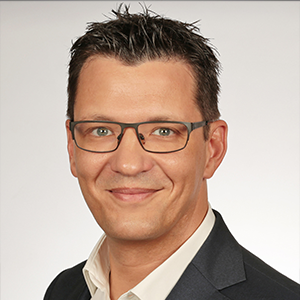
He has worked both operationally as a software developer, multi-project manager and Scrum Master, as well as head of software development, project management and IT business units.
Harald Wild studied Applied Computer Science and IT Business Management and is certified computer scientist in technical informatics, certified IT business manager in project management, certified agile leader credential 2, scrum master and product owner of the Scrum Alliance and certified agile business coach.
He accompanied and coached software development teams and companies during their agile transition and towards Scrum, since 2005 and is currently driving the agile transition of the Verband der Privaten Krankenversicherung e. V. in germany (Association of Private Health Insurance).Topic
Abstract
There have always been reports of failed or unsustainable agile transitions, but they have been accumulating lately. Nonetheless, studies appear which also do not attest to a truly sustainable impact of agile transitions. Some of them are certainly true, others are just trying to push another consulting business model, promising solutions to known problems.
Nevertheless, there are some challenges, that every sustainable agile transition has to master. One of them being the agile transition of the management and on the other hand the adequate growth in leadership and agile values. Proper further development of methodological competence and needed skill sets like self-organization on an individual an on a team level, conceptual competence and also well-founded decision-making is also essential to prepare people for the new agile world.
In the past I have gained a lot of experience on how best not to carry out agile transitions. On the one hand because I made the mistakes myself, on the other hand because I experienced agile transitions, which for various reasons did not bring the successone hoped for.
That’s why we at the Verband der Privaten Krankenversicherung e. V. are now using a top-down leadership first approach. We start with agile transitions in management teams and then extend them to the other levels of the business unit and the company. In addition, we always coach and certify management in leadership and agile core values, before we begin to deep dive into frameworks and agile work environments. The managers that drive the change, form our transition teams. We do this from the experience that even traditional, linear work environments already benefit from agile approaches to leadership, even if these work environments do not yet completely work according to agile principles and frameworks. So, they profit immediately from lateral leadership. On the other hand, agileframeworks do not work in linear and at least partially directive environments. So just implementing frameworks is shortsighted and does not lead to business agility. A simple and effective insight.
In addition, a sustainable agile transition is not only dependent on the favor of management. It is essential that employees are prepared for the new working models. Even in a well-known linear world, employees might lack the necessary competencies in self or team organization, in well-founded decision-making and personal responsibility. The skills mentioned cannot be coached in a short time.
Therefore, agile transitions have problems with resistance of the staff, who are afraid of the new world due to inadequate preparation or do not recognize the sense and the benefit behind the transition.
Therefore, we use this experience and coach employees very early, even before we talk about agile topics in the aforementioned disciplines. In this way, we methodically bring people “outside the door” to the agile world. Then we start again with agile core values and ensure that agility is understood before frameworks are deeply discussed.
In this way, both managers and employees gain self-confidence, understand the basic procedures and behaviors of the agile world and can then apply frameworks and transform their working environment according to these agile and social values.
We started with the IT division, then extended the agile transition to HR, Finance, Central Purchasing and Services and now start in a third step to integrate other business units such as Public Relations, Politics and the legal division into the transition.
In my speech I will point out the part where we make sure that agile core values are understood at first, to understand lateral leadership and after this we transform work processes and use frameworks. Also, the parts we struggled with when trying to achieve business agility and the strategies we used to overcome those problems.
